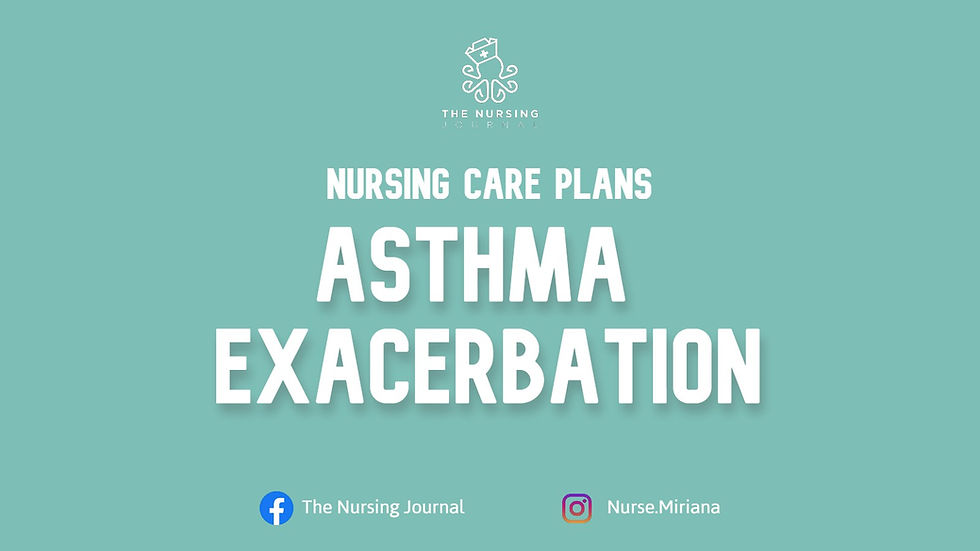Measuring the Respiratory Rate
- Miriana Borg
- Jun 1, 2022
- 4 min read
Updated: Jun 3, 2022
Measuring the Respiratory Rate means that you’ll be measuring the number of breaths taken per minute. Despite it being a very easy task, knowing the respiratory rate gives us much valuable information. This is primarily because changes within the respiratory rate usually reflect deeper physiological problems, including deterioration or complications.
Measuring the Respiratory Rate: Introduction
So we’ve established that the respiratory rate measures the ventilation; the value is typically charted as a number followed by the letters bpm, which represents Breaths Per Minute. Generally, most hospitals follow the National Early Warning Score (NEWS) guidelines issued by the Royal College of Physicians to determine whether the respiratory rate value is within normal limits or indicative of complications.
According to NEWS, the average respiratory rate for a healthy adult is between 12-20 bpm. Anything lower than 12 suggests the risk of respiratory failure, and values higher than 20 typically indicate an increased risk of cardiac arrest. However, it’s essential to keep in mind that our bodies change as we age, and the window of safe breaths per minute is wider for individuals over 65 years.
Unfortunately, many nurses overlook the respiratory rate and rely solely on SpO2 measurements thinking that this is enough to detect deterioration. While it is true that if a patient is deteriorating, their SpO2 level declines, it takes a long time before this happens. When a patient is in the early phase of deterioration, their body increases the respiratory rate to keep up with the oxygen demand, which means that the oxygen saturation remains balanced. It is only after a significant time that the patient’s deterioration affects the SpO2 level. Hence recording the respiratory rate has a significant role in detecting early signs of deterioration.
Measuring the Respiratory Rate: Indications
Measuring the respiratory rate falls as part of the vital signs (parameters), which are tests performed routinely to assess a patient’s physiology. However, apart from routine monitoring, the respiratory rate should be checked in:
Post-operative patients
Patients on intravenous fluids to detect a fluid overload or pulmonary oedema
Patients on medications that may cause respiratory distress, such as Opioids, Benzodiazepines, Barbiturates, Sleeping pills or Illicit drugs.
Patients with chronic lung conditions
Patients on oxygen therapy
Measuring the Respiratory Rate: Abnormal Values
As we mentioned above, the regular respiratory rate should be between 12 and 20 bpm; anything outside that window is abnormal. The most common reasons for Tachypnoea (a higher respiratory rate) are:
Anxiety and psychological stress
Uncontrolled pain
Fever
Respiratory conditions (asthma, pneumonia, pulmonary embolism, COPD, acute respiratory distress syndrome)
Severe allergic reaction (anaphylaxis) or Haemorrhagic shock
Heart failure
Diabetic Ketoacidosis
Exercise
On the other hand, the most common reasons for Bradypnea (a lower respiratory rate) are:
Respiratory complications (sleep apnoea, airway obstruction, depression of the respiratory centre)
Medication side effect
Depression in the respiratory centre
Increased intracranial pressure
Diabetic coma
Obesity
Measuring the Respiratory Rate: The Procedure
Start by first checking your patient’s file and determining the indication for checking the respiratory rate. Knowing why you’re measuring it will help identify and make sense of potentially abnormal readings. Moreover, check the patient’s treatment chart, medical history and current status to identify any risk factors that might alter the respiratory rate.
Once you’re all set, grab a watch that displays the seconds, apply an alcohol hand rub to reduce the risk of infection transmission and go over to the patient. Introduce yourself and explain why you’ll measure their respiratory rate and how the procedure is done. As you’re talking to your patient, remember to observe their posture, speech and cognitive status as all of the following can be signs of respiratory distress:
Resting hands on their knees
Pulling the side rails to breathe
Using accessory muscles during ventilation
Taking long pauses mid-sentence
Replying in one-word answers
Having a confused state of mind
Cyanotic lips
Ask your patient to sit comfortably with their legs supported and remove any excess clothing or blankets that can get in the way of you detecting their respirations. If your patient is on oxygen therapy, secure the mask/nasal prongs and document the flow rate onto the observation chart. Ask your patient if they’ve performed a strenuous activity in the past 30 minutes and if so, allow them to rest before starting the procedure.
Once you’re ready, look at the seconds timer and start counting every time your patient’s chest goes up. Keep counting until you reach 60 seconds, and then document the reading on the patient’s file. It’s crucial that you actually count the full minute and not simply multiply the value of 30sec because this time allows you to notice any abnormal rhythms. Compare the value with previous readings, explain the value to your patient, and if the patient has an average rate, no further action is required. If the reading is outside the normal range, you should assess the patient for other signs of deterioration, inform your senior nurse and contact the patient’s medical team right away.
Pro-tip: Some patients get stressed, and they breathe more quickly or slower when you tell them you’ll be counting their breaths. So when you gain some confidence, you might want to tell them that you’re counting their pulse, but actually, look at their chest to avoid bias.
References:
Kelly C (2018) Respiratory rate 1: why accurate measurement and recording are crucial. Nursing Times; 114: 4, 23-24.
Chourpiliadis C, Bhardwaj A. Physiology, Respiratory Rate. [Updated 2021 Sep 20]. In: StatPearls [Internet]. Treasure Island (FL): StatPearls Publishing; 2022 Jan-. Available from: https://www.ncbi.nlm.nih.gov/books/NBK537306/
Sapra A, Malik A, Bhandari P. Vital Sign Assessment. [Updated 2022 May 8]. In: StatPearls [Internet]. Treasure Island (FL): StatPearls Publishing; 2022 Jan-. Available from: https://www.ncbi.nlm.nih.gov/books/NBK553213/
Drummond, G. B., Fischer, D., & Arvind, D. K. (2020). Current clinical methods of measurement of respiratory rate give imprecise values. ERJ open research, 6(3), 00023-2020. https://doi.org/10.1183/23120541.00023-2020





Comments